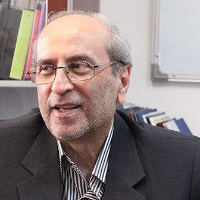Non-Medical Treatments of Drooling by Speech and Language Pathologists in Cerebral Palsy Children: A Systematic Review
Drooling, commonly observed in cerebral palsy children, negatively impacts different aspects of their lives. There are several treatment options for drooling, with no consensus on a single method as the most effective one. The current systematic review provides an overview of the evidence of the different non-medical intervention methods used by speech and language pathologists to reduce drooling in cerebral palsy children.
A comprehensive and systematic search was conducted in the following electronic databases for publications from 2010-22: PubMed, Scopus, Science Direct, Web of Science, Cochrane Database of Systematic Reviews, and Google Scholar. The National Health and Medical Research Council (NHMRC)and the Physiotherapy Evidence Database (PEDro-P) scale were respectively used to determine the level of evidence and the methodological quality of articles.
Out of 2740 articles identified, 15 records met the inclusion criteria and were included in the study. The studies considered in this systematic review differed in the following criteria: design, participant characteristics, types of assessments and treatments, and follow-up periods. Non-medical interventions for drooling were found to be effective in alleviating the severity and decreasing the frequency of drooling.
The results showed the effectiveness of nonmedical interventions for drooling in cerebral palsy children. The treatments provided by SLPs can be classified into three categories: oromotor and sensory interventions, behavioral interventions, and the use of Kinesio-tape. Among these, the use of oromotor interventions and oral sensory interventions, alone or combined with other approaches, was the most widely used method.
-
Cross-cultural Adaptation of the Iranian Version of the Voice Symptom Scale
Siavash Mohammadi Dehbokr, Farhad Torabinezhad, Ali Ghorbani, Reyhane Mohamadi*, , Amirali Habibi
Function and Disability Journal, Winter 2024 -
Voice Handicap Index and Acoustic Parameters in Thyroidectomized Patients with and without Voice Problems
Maryam Rezvani Bafroui, Bijan Khorasani*, Younes Amiri-Shavaki, , Mohammad Sadegh Jenabi
Function and Disability Journal, Summer 2018



